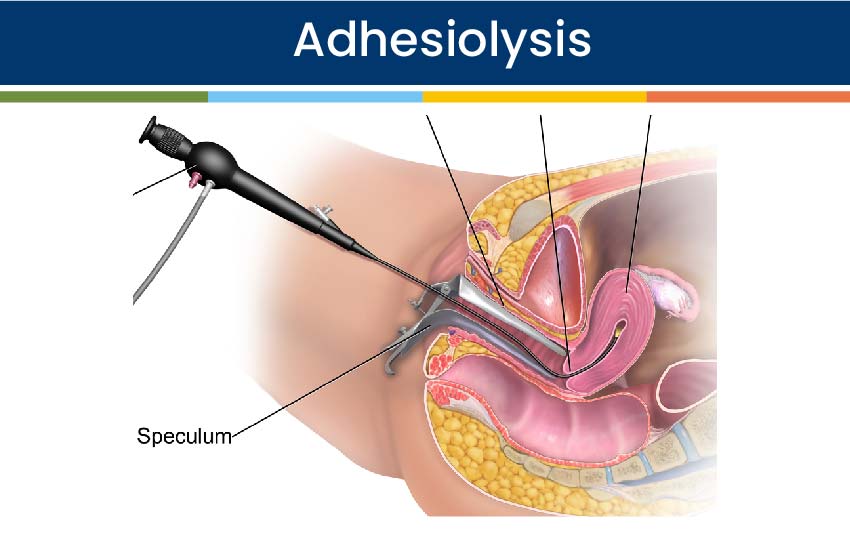What is Adhesiolysis?

Symptoms of Adhesions
Many adhesions do not cause symptoms and may go unnoticed. However, when they interfere with organ function, common symptoms include:
- Chronic abdominal or pelvic pain
- Bowel obstruction (nausea, vomiting, bloating, constipation)
- Pain during movement or exercise
- Infertility in women (if affecting reproductive organs)
- Pain during intercourse (dyspareunia)
- Difficulty with urination or bowel movements
Procedure / Treatment Options
Adhesiolysis involves careful dissection and removal of the adhesions to restore normal organ movement and relieve symptoms. Treatment is typically recommended when adhesions cause:
Intestinal obstruction
Chronic pain unresponsive to conservative treatments
Infertility related to pelvic adhesions
Types of Adhesiolysis Procedures:
Laparoscopic Adhesiolysis
Minimally invasive
Small incisions and faster recovery
Lower risk of new adhesion formation
Open Adhesiolysis (Laparotomy)
Required for extensive or complex adhesions
Longer recovery time
Typically used in emergency cases such as severe bowel obstruction
Prevention of Adhesions
Although not all adhesions can be prevented, certain strategies help minimize the risk:
- Using minimally invasive surgical techniques (laparoscopy)
- Avoiding unnecessary surgeries
- Using adhesion barriers during surgery (special gels or films)
- Gentle tissue handling during procedures
- Controlling infections and inflammation promptly
Benefits of Adhesiolysis
- Relief from chronic abdominal or pelvic pain
- Restoration of normal organ function
- Prevention of future complications like bowel obstruction
- Improved fertility outcomes in women
- Enhanced quality of life and mobility
Who Needs Adhesiolysis?
This procedure is beneficial for individuals who have:
- History of multiple abdominal or pelvic surgeries
- Symptoms of bowel obstruction
- Unexplained infertility
- Pelvic pain related to past infections or endometriosis
